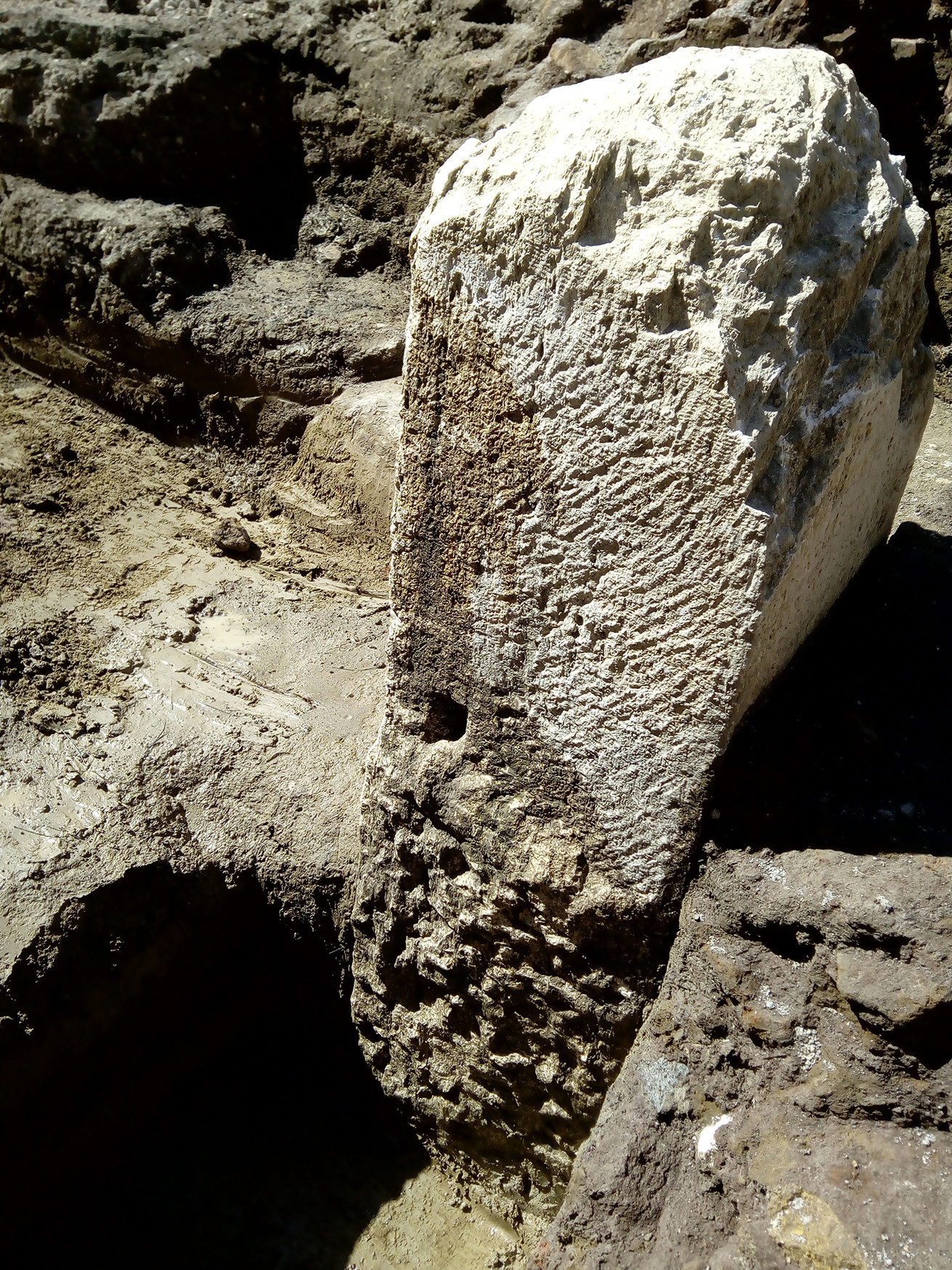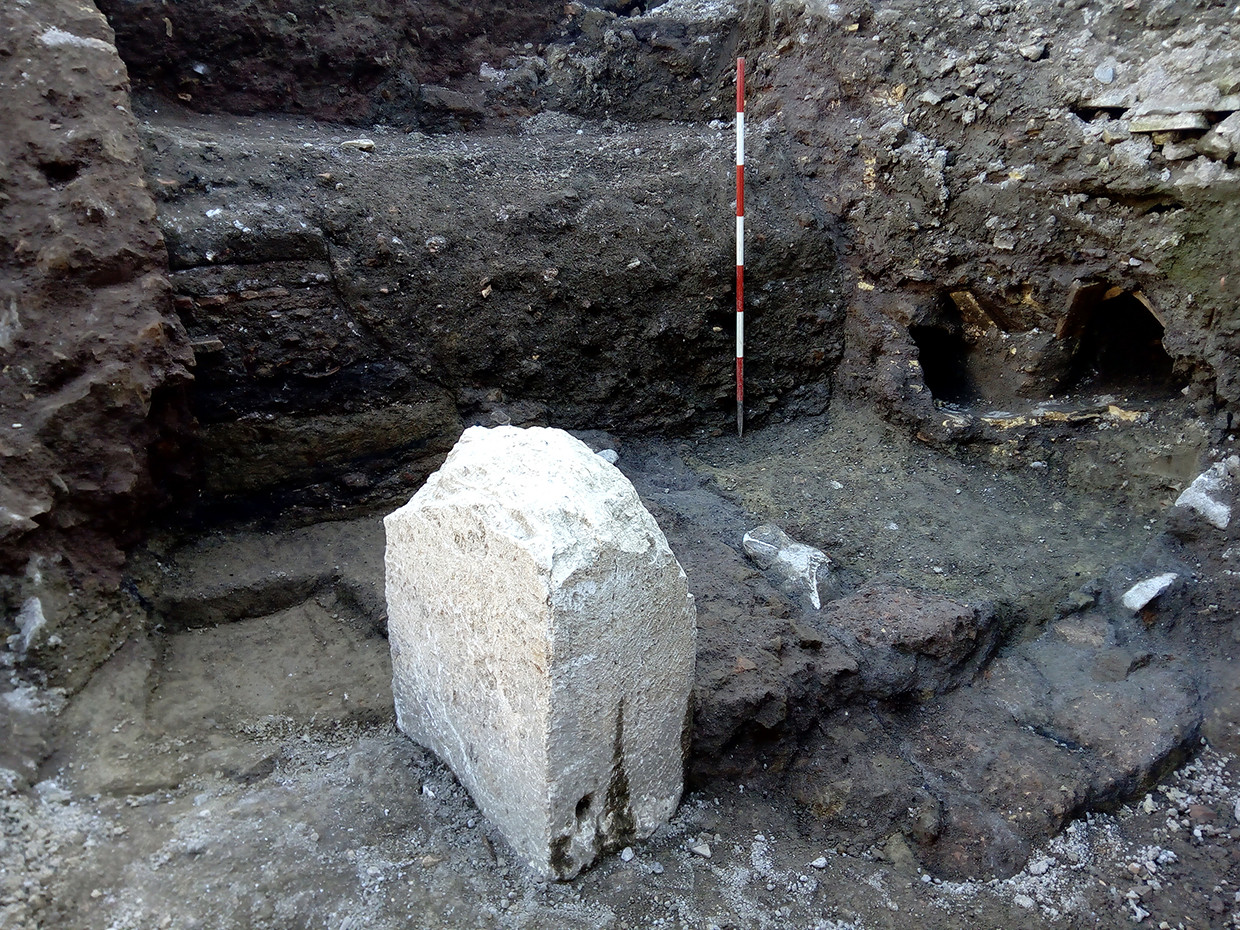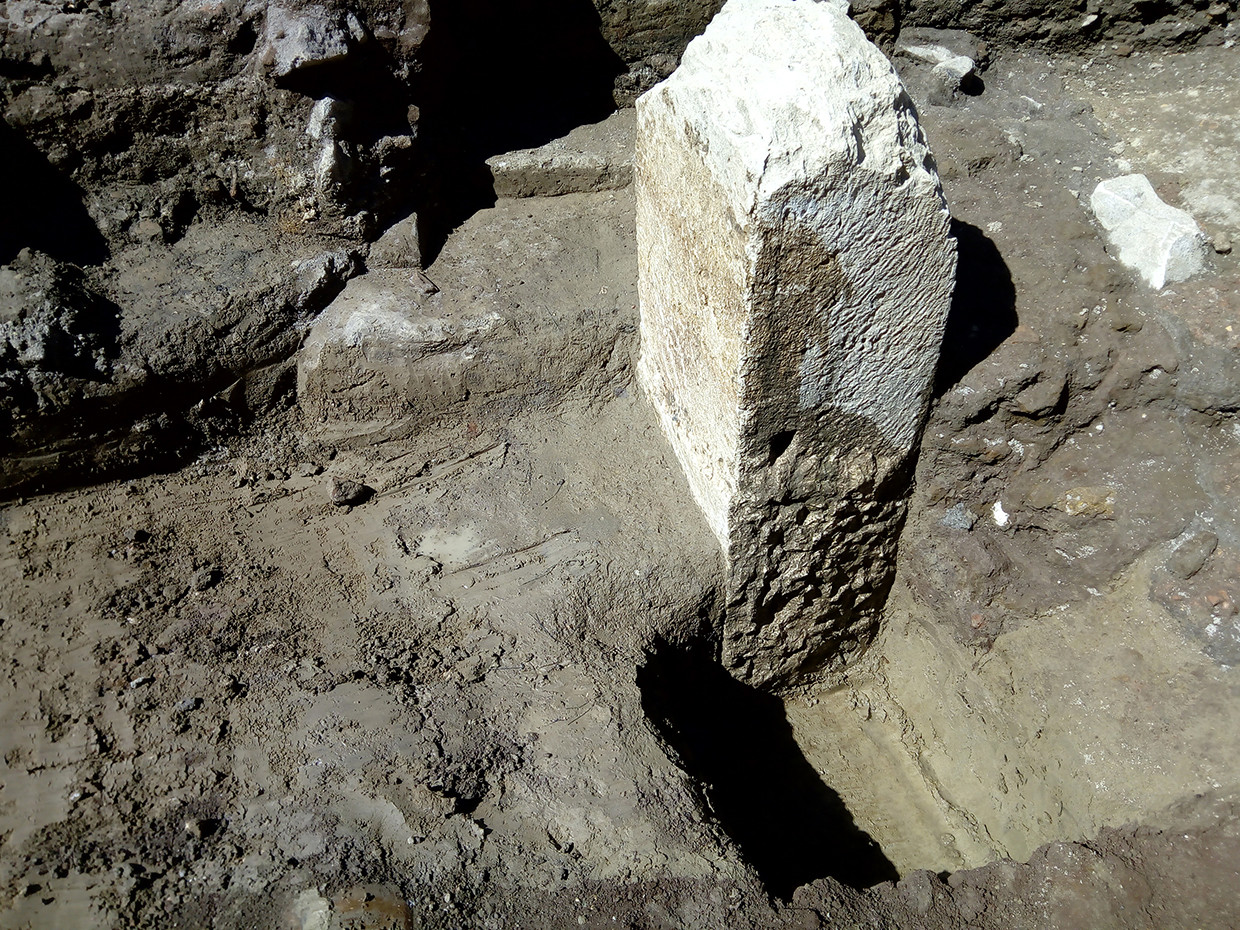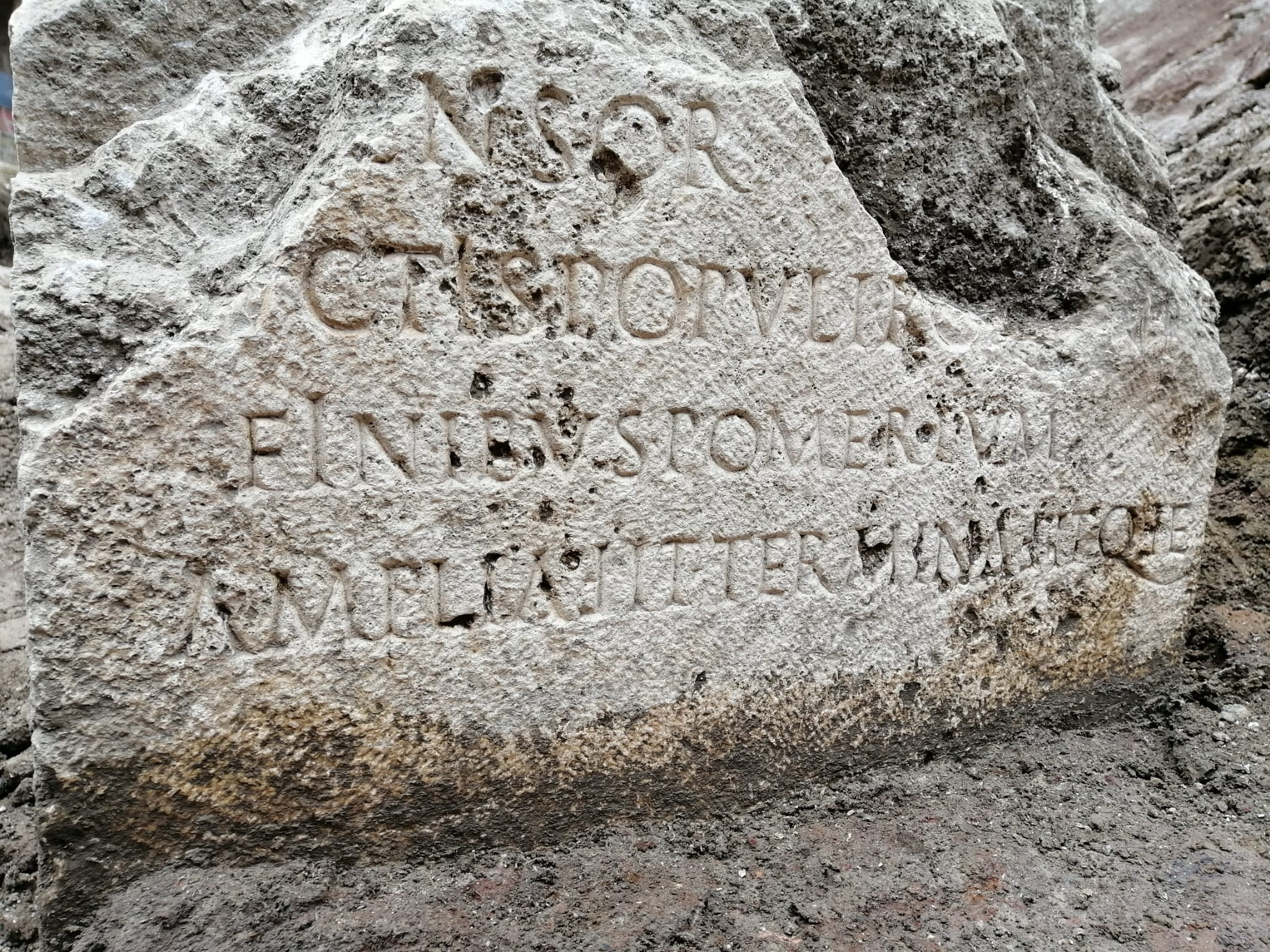Sacred stone tied to the legend of Romulus and Remus unearthed in Rome
An immense stone that defined the sacred city limits of ancient Rome almost 2,000 years ago has been unearthed by construction workers in the historic center of the city.
The so-called pomerial stone or "cippus," is more than 6 feet (nearly 2 meters) tall and made of fine limestone called travertine. Workers discovered it in June while installing new sewers in the plaza around the recently-restored Mausoleum of Augustus, which opened as a museum earlier this year.
It was one of dozens of similar stones that marked Rome's "pomerium" — a sacred strip of land just inside and outside the city walls where it was forbidden to build or farm, and within which weapons were forbidden. According to ancient Roman law, anything inside the pomerium was part of the city of Rome (called "urbs") and everything beyond it was merely territory (called "ager").
"The founding act of the city of Rome starts from the realization of this pomerium," Claudio Parisi Presicce, the director of the Archaeological Museums of Rome, said at a news conference announcing the discovery in July.
According to Peter Wiseman, a professor emeritus of classics at the University of Exeter in the United Kingdom, the pomerium was first established by Romulus, the legendary founder of Rome, who outlined the city's walls in about the eighth century B.C. with a furrow he'd made with a plowshare drawn by a sacred ox.
Related: Tomb of Rome's mythical founder Romulus unearthed
The legend goes on to say that Romulus became angry and killed his twin brother Remus when Remus jumped over the furrow in mockery.
Get the world’s most fascinating discoveries delivered straight to your inbox.
"The furrow itself thus marked the ancient boundary of the city, called the pomerium as if it were post moerium — 'behind the wall,'" Wiseman told Live Science in an email.
Until the redevelopment is completed, the stone will be on display in the Ara Pacis Museum, built around a nearby monument commissioned by the Roman Senate — the governing assembly of ancient Rome — to honor the Emperor Augustus in 13 B.C.





Ancient city
Although 10 other pomerial stones have been found before, this is the first one found in more than 100 years.
A Latin inscription on the stone shows it was placed along the sacred strip in about A.D. 49 during the expansion of the city by the Emperor Claudius, who ruled from A.D. 41 to A.D. 54; it matches another pomerial stone from the time that is now on display in the Vatican Museums.
The city's pomerium had great civic and symbolic meaning, and it was extended several times throughout the history of ancient Rome. Tradition held that the pomerium could be extended only by a magistrate — an official of the Republic — who had expanded Roman territory, and so Claudius seems to have cited his conquest of Britain in A.D. 43 as his justification for doing so, Wiseman said.
Related: 30 of the world's most valuable treasures that are still missing
The expansion of the city by Claudius included the Campus Martius — the "Field of Mars" — which at the time of the Roman Republic was outside the pomerium. The Mausoleum of Augustus is at the northern end of this area.
By the time of Claudius' rule, "the Campus Martius area outside the walls had been developed with very grand public buildings — porticos, temples and theaters, etcetera — so obviously the pomerium had to be extended to include it," he wrote in an email.
Sacred city
The concept of a sacred boundary around the ancient city of Rome may have originated with the Etruscans, an early people who lived in the region and who influenced the Romans who came after them, said Filippo Carlà-Uhink, a professor of ancient history at the University of Potsdam in Germany.
"When Romulus draws [the pomerium], he basically separates the world of civilization and history — the city — from the wilderness and prehistory of what remains outside," Carlà-Uhink told Live Science in an email.
Many laws in ancient Rome were concerned with the limits marked by the pomerial stones: For example, the magistrates known as "tribunes of the plebs" had powers to intervene in political affairs during the Republic only within the city boundary; and delegations of allies could cross the pomerium, but delegations of enemies could not unless they were explicitly authorized by the governing Senate, he said.
It was forbidden to carry weapons within the pomerium, and so Roman armies had to be dismissed outside it — although they were given exemptions for military processions through the city, known as triumphs, that were granted by the Senate to victorious generals, he said.
The pomerium was considered sacred: Magistrates were expected to consult the "city auspices" — the outlook for good or bad luck, conducted by a priest known as an "augur" — whenever they crossed that strip of land, and their failure to consult these forecasts was seen as potentially fatal.
For instance, the Roman author and politician Cicero related that the consul Tiberius Gracchus in 163 B.C. forgot to take the city auspices a second time after he was recalled to the city for a meeting of the Senate — and that his failure resulted in the sudden death of an election official called a "rogator," he said.
"This was immediately perceived as a sign that the gods had been angered, and when it was clear why, the Senate decided that the two consuls-elect must resign and the elections were held a second time," Carlà-Uhink said.
Originally published on Live Science.
Tom Metcalfe is a freelance journalist and regular Live Science contributor who is based in London in the United Kingdom. Tom writes mainly about science, space, archaeology, the Earth and the oceans. He has also written for the BBC, NBC News, National Geographic, Scientific American, Air & Space, and many others.


